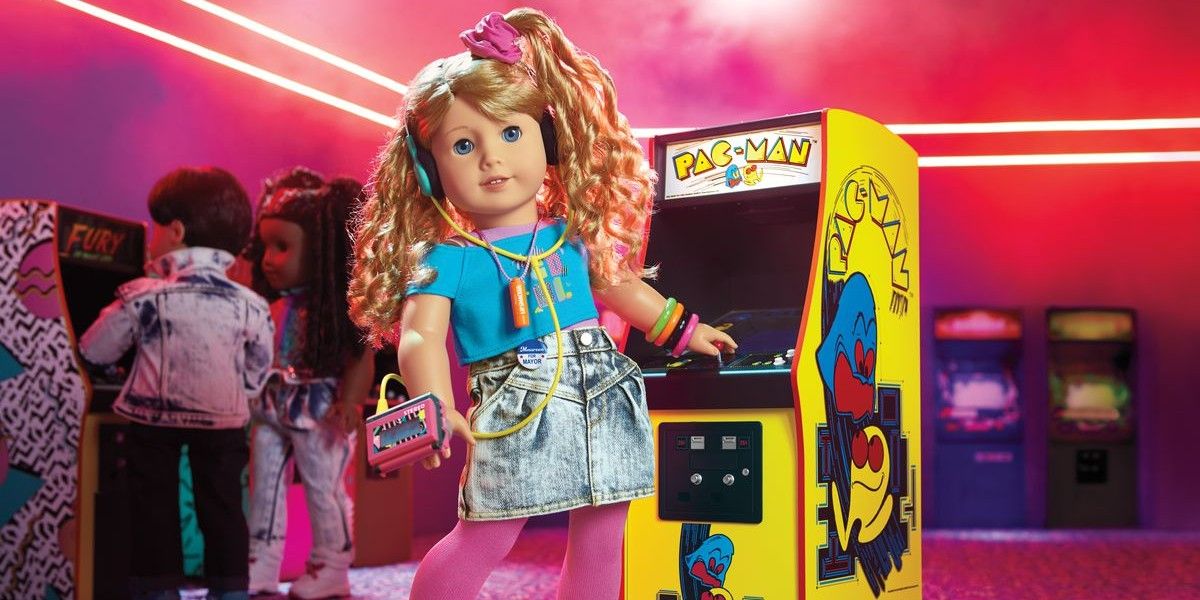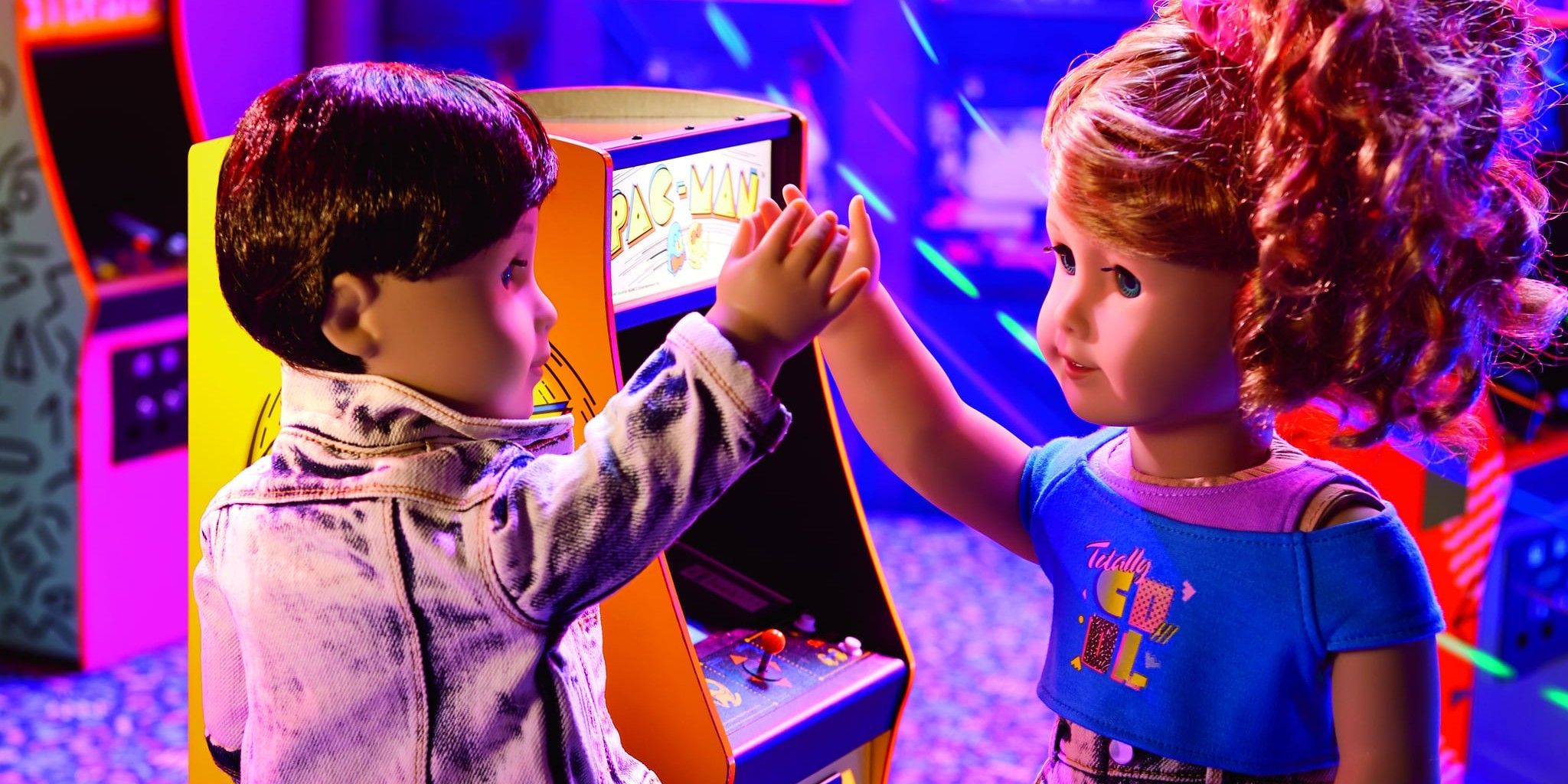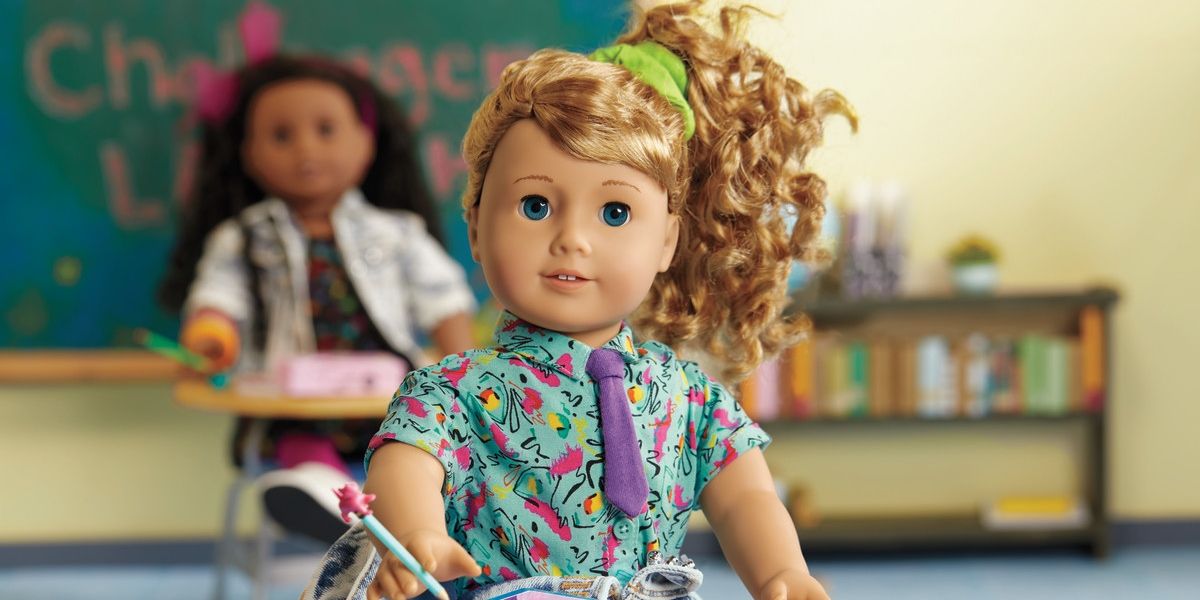American Girl has just released its first new historical doll in three years, and she's a 1980s gamer girl. Even for those people too old to play with dolls or who don't keep up with American Girl, the release of gamer Courtney Moore is important. She provides a gamer role-model for young girls to look up to, showcasing that women enjoy gaming. Plus, by setting her in the '80s, Courtney demonstrates that women always have been interested in nerd culture.
Courtney Moore is a child of the '80s whose story focuses on finding a place for women in the games she loves to play. She hangs out at the arcade and is fascinated by the astronauts working for the Challenger space shuttle program. A number of '80s accessories are available for Courtney, including a fanny-pack, walkman and hightop sneakers, solidifying her retro look. Perhaps her coolest accessory is a working Pac-Man arcade cabinet.
Showcasing women gamers helps increase representation for a significant portion of video game audiences. The place of women in gaming has been consistently challenged for decades, coming to a head during GamerGate. Most games have featured male protagonists, perpetuating the idea that games were stories for men. Courtney not only plays games, but becomes interested in creating them, reasserting the role of women in playing and programing. For those interested in this doll, she provides a role-model of available futures of work and fun.
But Courtney's story is also important for showing what growing up in the '80s was like for many girls, especially gamers. Not only are women an active part of gaming communities, but they have been for decades. The history of video games is often written from the viewpoint of men, but many games were created by and for women. By establishing her as a retro-gamer, Courtney highlights that women have always been part of game development, but also that the contributions of women to gaming have been overlooked.
American Girl has a history of working toward better representation. The company identifies as a progressive brand, releasing dolls that feature positive representations of cultures and disability. Their 2020 Girl of the Year doll, Joss Kendrick, has hearing loss and comes with her own hearing aid. The company has also recently made stories featuring Black heroines (that were written by Black women) available for free as part of its commitment to equality and inclusion. American Girl includes characters active in social justice work and in areas traditionally reserved for men, including surfing and programming.
While Courtney is great representation for female gamers, some members of the community have found her design lacking. Despite the company's recent commitment to diversity, Courtney is another white doll. While demonstrating that girls can be gamers, it's also important to recognize that not all gamers are white. Having a Black or POC retro-gamer would have been even better representation.
American Girl also came under scrutiny recently for their astronomer doll Luciana, a character they seemed to have based off of real-life astronomer Lucianne Walkowicz without asking for their permission. While drawing from real people for their characters is a great way to highlight actual possibilities open to women, doing so without consulting them is problematic.
Though Courtney isn't perfect, her addition to the American Girl line-up is incredibly important. It shows young girls that they can be gamers, that women have always been gamers and that they contribute in areas which have traditionally been reserved for men. Fighting against the gate-keeping still prevalent within the industry, Courtney helps to re-assert a space for women gamers.



